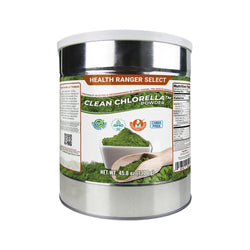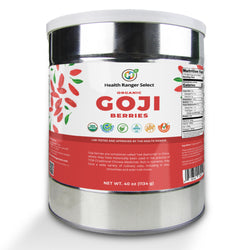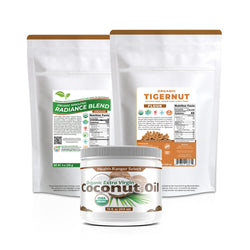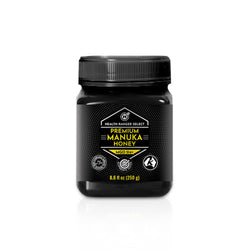Powered by Brightu.AI. Check out our prompting guide and video tutorials today.
12/05/2025 / By Lance D Johnson
A major study of over 11,000 adults links long-term exposure to common air pollutants—fine particulate matter (PM2.5) and nitrogen dioxide (NO2)...
Views // Share
12/05/2025 / By Willow Tohi
Excessive thinking, or rumination, is linked to physical health issues, particularly digestive problems, according to both ancient Traditional Chi...
Views // Share
12/05/2025 / By Ramon Tomey
Colombian President Petro warned U.S. President Trump that threatening Colombia's sovereignty "will wake the jaguar," framing U.S. actions as a de...
Views // Share
12/05/2025 / By Kevin Hughes
The world's top 100 arms manufacturers reached $679 billion in revenue in 2024, a 9% increase from 2023. Escalating conflicts, rising defense ...
Views // Share
12/05/2025 / By Olivia Cook
A trusted Midwestern dairy issued a limited recall alert after identifying that some fat-free milk gallons may contain food-grade cleaning agents....
Views // Share
12/05/2025 / By Patrick Lewis
Unlike vitamins, fiber absorbs water in the intestines, creating larger, softer stools that pass more easily, ending constipation for most people....
Views // Share
12/05/2025 / By Evangelyn Rodriguez
Smoking causes persistent immune dysfunction, with inflammatory effects lasting up to 15 years after quitting, weakening defenses against familiar...
Views // Share
12/05/2025 / By Finn Heartley
Russia’s Dire Warning: Kremlin strategist Alexander Dugin warns Europe faces annihilation if it continues aggressive policies toward Ukraine, sh...
Views // Share
12/05/2025 / By Cassie B.
EV real-world testing in Australia reveals all models fall short of advertised range.
The MG4 performed worst among the group tested, missing i...
Views // Share
12/05/2025 / By Willow Tohi
Race against China: U.S. bets on fast-track nuclear power, but critics warn of “rubber stamp” safety
President Trump's executive orders have launched new DOE programs to fast-track advanced nuclear reactor development and fuel supply chains.
Th...
Views // Share
12/05/2025 / By Ramon Tomey
U.S. Secretary of Defense Pete Hegseth was formally cleared of illegally sharing classified information following an eight-month inspector general...
Views // Share
12/05/2025 / By Lance D Johnson
An Environmental Defense Fund review found the FDA has consistently failed to enforce a 2016 rule requiring assessment of the cumulative health ef...
Views // Share
12/05/2025 / By Patrick Lewis
Smartphone ownership at age 12 increases depression risk by 31%, obesity by 40% and sleep deprivation by 62%, with earlier exposure worsening long...
Views // Share
12/05/2025 / By Cassie B.
AI data centers are causing a severe global memory chip shortage.
Manufacturers are prioritizing high-margin AI chips over consumer electronics...
Views // Share
12/05/2025 / By Belle Carter
President Trump warned of "very, very tough" sanctions against both Russia and Ukraine if peace talks collapse. His strategy balances support for ...
Views // Share
12/05/2025 / By Ramon Tomey
The European Union is poised to impose a multimillion-dollar fine on Elon Musk's X under the Digital Services Act (DSA), accusing the platform of ...
Views // Share
12/05/2025 / By Cassie B.
China has deployed more than 100 naval and coast guard vessels in its largest maritime show of force across East Asian waters.
The unprecedente...
Views // Share
12/05/2025 / By Lance D Johnson
Diabetes and oral health have a bidirectional relationship, where each condition negatively impacts the other.
High blood sugar creates an idea...
Views // Share
12/05/2025 / By Willow Tohi
The 2025 Atlantic hurricane season concluded with below-average activity, featuring only five hurricanes and no U.S. landfalls.
Reliable histor...
Views // Share
12/05/2025 / By Willow Tohi
A key CDC advisory committee is debating a potential delay to the hepatitis B vaccine birth dose.
Critics argue the vaccine was licensed based ...
Views // Share
12/05/2025 / By Cassie B.
Netanyahu seeks a presidential pardon to avoid his corruption trial.
He argues the ongoing wars make his legal case a national security risk.
...
Views // Share
12/05/2025 / By Cassie B.
Israeli airstrikes hit south Lebanon hours after historic direct talks.
The attacks targeted residential areas Israel claims housed Hezbollah w...
Views // Share
12/05/2025 / By Kevin Hughes
President Donald Trump confirmed the deployment of up to 1,000 National Guard troops to New Orleans at the request of Louisiana Governor Jeff Land...
Views // Share
12/05/2025 / By Ramon Tomey
MyPillow CEO Mike Lindell, a staunch Trump ally and election integrity advocate, has taken formal steps toward a Republican gubernatorial bid in M...
Views // Share
12/05/2025 / By Ramon Tomey
The EU finalized plans to halt all Russian LNG imports by 2026 and pipeline gas by 2027, aiming to weaken Moscow's geopolitical leverage. However,...
Views // Share
12/05/2025 / By Zoey Sky
A former Ukrainian prime minister claims an astonishing $100 billion of foreign aid may have been stolen since the war began, highlighting severe ...
Views // Share
12/05/2025 / By Belle Carter
The Trump administration imposed sanctions on four ICC judges investigating alleged war crimes by Israel and the U.S. in Gaza, freezing their asse...
Views // Share
12/05/2025 / By Patrick Lewis
Russia condemns NATO Admiral Dragone's suggestion of "pre-emptive strikes" as reckless escalation, undermining diplomatic efforts amid Ukraine's d...
Views // Share
12/05/2025 / By Zoey Sky
Telegram's CEO has launched Cocoon, a decentralized network on the TON blockchain that connects people who need AI processing with individuals who...
Views // Share
12/05/2025 / By Evangelyn Rodriguez
Instead of one thick coat, use multiple thin layers for better heat retention and moisture control.
The three-layer system includes the base la...
Views // Share
12/04/2025 / By Willow Tohi
Surging electricity demand from AI data centers is colliding with a strained U.S. power grid, risking reliability.
The nation’s nuclear energ...
Views // Share
12/05/2025 / By Patrick Lewis
Unlike vitamins, fiber absorbs water in the intestines, creating larger, softer stools that pass more easily, ending constipation for most...
Views // Share
12/04/2025 / By Patrick Lewis
Lab-grown meat relies on immortalized cell lines that mimic uncontrolled tumor growth, raising serious concerns about carcinogenic risks.
...
Views // Share
12/04/2025 / By Jacob Thomas
Scientific research shows that a plant-based diet can be advantageous for athletes, leading to improved endurance, higher VO2 max (a key...
Views // Share
12/04/2025 / By Patrick Lewis
Rich in vitamin C, anthocyanins and antioxidants, elderberries help shorten cold and flu duration and enhance immune function.
Traditionally...
Views // Share
12/05/2025 / By Cassie B.
Israeli airstrikes hit south Lebanon hours after historic direct talks.
The attacks targeted residential areas Israel claims housed Hezbollah...
Views // Share
12/05/2025 / By Kevin Hughes
President Donald Trump confirmed the deployment of up to 1,000 National Guard troops to New Orleans at the request of Louisiana Governor Jeff...
Views // Share
12/05/2025 / By Ramon Tomey
MyPillow CEO Mike Lindell, a staunch Trump ally and election integrity advocate, has taken formal steps toward a Republican gubernatorial bid in...
Views // Share
12/05/2025 / By Ramon Tomey
The EU finalized plans to halt all Russian LNG imports by 2026 and pipeline gas by 2027, aiming to weaken Moscow's geopolitical leverage....
Views // Share
12/05/2025 / By Ramon Tomey
Colombian President Petro warned U.S. President Trump that threatening Colombia's sovereignty "will wake the jaguar," framing U.S. actions as a...
Views // Share
12/05/2025 / By Finn Heartley
Russia’s Dire Warning: Kremlin strategist Alexander Dugin warns Europe faces annihilation if it continues aggressive policies toward Ukraine,...
Views // Share
12/05/2025 / By Ramon Tomey
U.S. Secretary of Defense Pete Hegseth was formally cleared of illegally sharing classified information following an eight-month inspector...
Views // Share
12/05/2025 / By Patrick Lewis
Smartphone ownership at age 12 increases depression risk by 31%, obesity by 40% and sleep deprivation by 62%, with earlier exposure worsening...
Views // Share
12/05/2025 / By Lance D Johnson
A major study of over 11,000 adults links long-term exposure to common air pollutants—fine particulate matter (PM2.5) and nitrogen dioxide...
Views // Share
12/05/2025 / By Willow Tohi
Excessive thinking, or rumination, is linked to physical health issues, particularly digestive problems, according to both ancient Traditional...
Views // Share
12/05/2025 / By Olivia Cook
A trusted Midwestern dairy issued a limited recall alert after identifying that some fat-free milk gallons may contain food-grade cleaning...
Views // Share
12/05/2025 / By Patrick Lewis
Unlike vitamins, fiber absorbs water in the intestines, creating larger, softer stools that pass more easily, ending constipation for most...
Views // Share
12/05/2025 / By Evangelyn Rodriguez
Instead of one thick coat, use multiple thin layers for better heat retention and moisture control.
The three-layer system includes the base...
Views // Share
12/04/2025 / By Evangelyn Rodriguez
Medicinal herbs provide crucial alternatives when conventional medicine is unavailable, offering pain relief, wound care and immune support.
...
Views // Share
12/03/2025 / By Evangelyn Rodriguez
Emotional backpacks carry invisible burdens like trauma, regrets and unresolved emotions, which can hinder resilience and mental well-being if...
Views // Share
12/03/2025 / By Evangelyn Rodriguez
Cars built after the 2000s are packed with electronic control units (ECUs) and sensors, making them susceptible to EMP attacks, while older...
Views // Share
12/05/2025 / By Zoey Sky
A former Ukrainian prime minister claims an astonishing $100 billion of foreign aid may have been stolen since the war began, highlighting severe...
Views // Share
12/04/2025 / By Belle Carter
Nearly 70% of institutional investors surveyed by Goldman Sachs predict further gold price gains by 2026, with 36% forecasting prices exceeding...
Views // Share
12/04/2025 / By Belle Carter
Despite inflation and financial instability, American consumers are projected to spend more than ever in late 2025, with average holiday budgets...
Views // Share
12/04/2025 / By Jacob Thomas
A Trump-linked Bitcoin mining stock, American Bitcoin (ABTC), collapsed over 50% in an hour, triggering trading halts and erasing months of...
Views // Share
12/05/2025 / By Lance D Johnson
A major study of over 11,000 adults links long-term exposure to common air pollutants—fine particulate matter (PM2.5) and nitrogen dioxide...
Views // Share
12/05/2025 / By Evangelyn Rodriguez
Smoking causes persistent immune dysfunction, with inflammatory effects lasting up to 15 years after quitting, weakening defenses against...
Views // Share
12/05/2025 / By Willow Tohi
A key CDC advisory committee is debating a potential delay to the hepatitis B vaccine birth dose.
Critics argue the vaccine was licensed based...
Views // Share
12/05/2025 / By Zoey Sky
Telegram's CEO has launched Cocoon, a decentralized network on the TON blockchain that connects people who need AI processing with individuals...
Views // Share
12/05/2025 / By Ramon Tomey
U.S. Secretary of Defense Pete Hegseth was formally cleared of illegally sharing classified information following an eight-month inspector...
Views // Share
12/05/2025 / By Patrick Lewis
Smartphone ownership at age 12 increases depression risk by 31%, obesity by 40% and sleep deprivation by 62%, with earlier exposure worsening...
Views // Share
12/05/2025 / By Cassie B.
AI data centers are causing a severe global memory chip shortage.
Manufacturers are prioritizing high-margin AI chips over consumer...
Views // Share
12/05/2025 / By Ramon Tomey
The European Union is poised to impose a multimillion-dollar fine on Elon Musk's X under the Digital Services Act (DSA), accusing the platform of...
Views // Share




































































